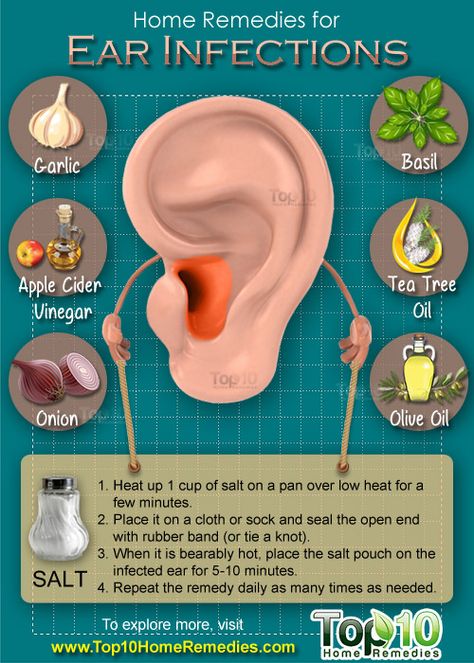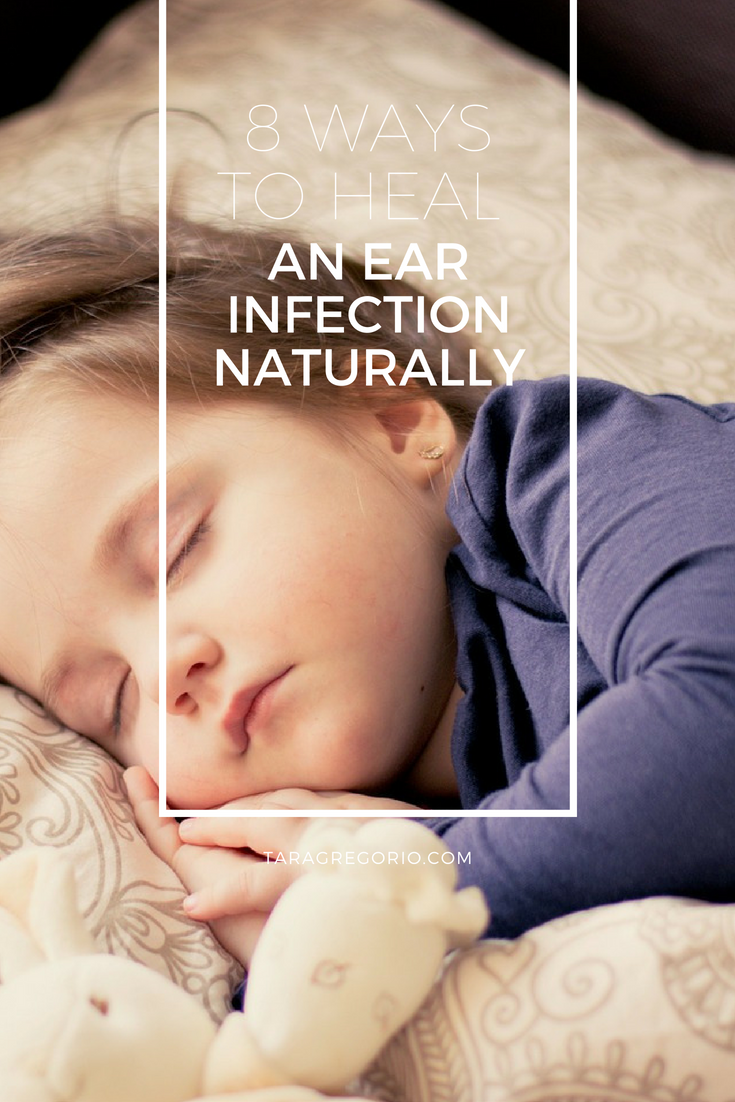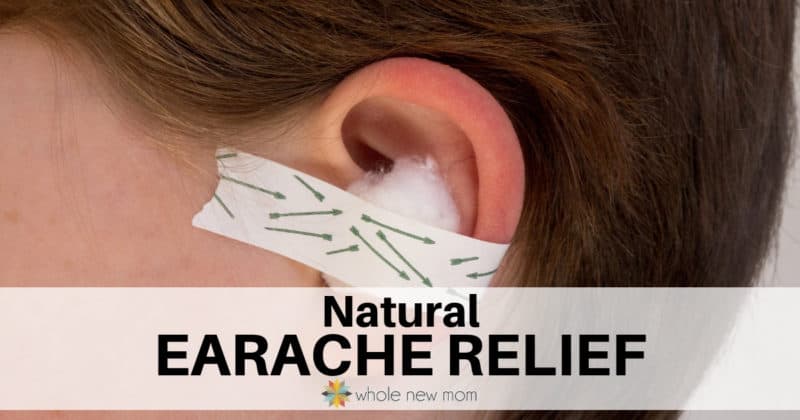Symptoms Of Ear Infections
- The main symptom is an earache.
- Younger children will cry, act fussy or have trouble sleeping because of pain.
- About 50% of children with an ear infection will have a fever.
- Complication: In 5% to 10% of children, the eardrum will develop a small tear. This is from the pressure in the middle ear. The ear then drains cloudy fluid or pus. This small hole most often heals over in 2 or 3 days.
Tubes For Recurrent Ear Infections Have Limited Effectiveness And High Risk
For children with chronic ear infections, inserting grommets, or ear tubes, into both ears is common practice. The tubes are meant to help fluid drain from the ears before an infection occurs. But the community is split on how effective they are at preventing future ear infections, especially beyond six months after insertion. Furthermore, even though ear tubes did decrease overall time with ear infections compared to watchful waiting in one study, it increased instances of infection in the opposite ear, ear discharge, and eardrum scarring. These are some pretty severe and uncomfortable side effects.
If you have a child who is experiencing ear infection after ear infection, a bigger underlying health issue is probably present and should be addressed. I would advise trying some of the health-boosting recommendations below before resorting to ear tubes because the research on their effectiveness is mixed, side effects are possible, and any surgery requiring general anesthesia carries its own separate risks. However, some children who already have severe, chronic ear infections may benefit from having tubes inserted while they also work on any underlying health issues.
What Are The Disadvantages Of Ototopical Antibiotics
Ototopical antibiotics have a few disadvantages as well, which include the following:
Difficulty in delivery
Direct delivery at the infection site may be difficult or impossible sometimes. The medication may fail to reach the infected area in the middle ear if the ear canal is blocked due to:
- Excessive and hardened earwax
- Block in the ear tubes inserted for fluid drainage from the middle ear
- Swollen or overgrown tissue
Steps must be first taken to clear the blocks before antibiotic administration. Irrigating the ear canal can easily clear a block caused by earwax and other secretions, but an ear tube block and granulation each may require some procedure and other medications.
Ototoxicity
Ototoxicity is toxicity to the ear from local administration. Ototoxicity can irritate and inflame the mucus membranes of the middle ear. If the antibiotic enters the inner ear, it may lead to:
- Vertigo
- Sensitivity reaction
Ototopical antibiotics can cause allergic reactions. Low-grade sensitivity reactions may cause persistent drainage that may be impossible to distinguish from drainage due to infection, making treatment difficult. Some people may also develop cross-sensitivity to related antibiotics.
Absence of systemic effect
Alteration of microenvironment
Read Also: Diy Candle Ear Wax Removal
Can You Still Have A Yeast Infection After Treatment
While long-term treatment plans may prevent recurrent vaginal yeast infections, symptoms may still recur when treatment is stopped. Treatment of a sexual partner Vaginal yeast infection is not a sexually transmitted infection, although the infection may rarely be passed from one partner to another.
How To Take Oral Antibiotics

Itâs important to always take your antibiotics as prescribed. It may be tempting to combine the doses, but they will not be as effective and could lead to adverse side effects, such as stomach upset.
Even if you begin to feel better, you should continue to take the antibiotics until you finish your medication to prevent the infection from returning. You should avoid alcohol while taking antibiotics.
While antibiotics are good for clearing a bacterial infection, they can also rid the body of helpful “good” bacteria at the same time. Because of this, you may want to consider taking a probiotic supplement while you are on antibiotics.
Probiotics are living organisms that can help to prevent the imbalance of bacteria within your gut that often comes from taking antibiotics. Studies have shown that taking probiotics while taking antibiotics can lower the chances of side effects from a bacterial imbalance, such as gastrointestinal upset and diarrhea.
You May Like: How To Turn On Hearing Aid Mode On Iphone
Antibiotics For Ear Infections
Amoxicillin is one of the most commonly prescribed antibiotics to get rid of ear infections. In case, amoxicillin doesn’t work, a stronger antibiotic such as Augmentin ES may be recommended.
Amoxicillin is one of the most commonly prescribed antibiotics to get rid of ear infections. In case, amoxicillin doesnt work, a stronger antibiotic such as Augmentin ES may be recommended.
Ear infections are a result of bacteria making their way into the ear canal. However, bacteria can also gain access to ear parts by entering through the nose. Ear pain, runny nose, and partial blockage of ear due to formation of pus are some of the common symptoms of an ear infection, that can always be treated with antibiotics.
How Is An Ear Infection Diagnosed
Once youre at the doctors office, a medical professional will look inside your ear with an otoscope to determine whether you have an infection.
Typical signs include fluid buildup in the ear canal and middle ear, along with a red and inflamed eardrum.
Depending on the severity of your symptoms, your doctor may recommend waiting a few days to see if your ear infection improves.
Some infections resolve on their own. But if the infection is severe, or if symptoms dont improve after this time, then antibiotics may be warranted.
Chronic fluid buildup without an infection warrants additional testing from an ear, nose, and throat specialist.
Its especially important to diagnose young children so that they dont encounter speech and language delays from loss of hearing.
If your doctor recommends antibiotics to treat a severe ear infection, they will likely recommend an oral treatment, such as amoxicillin .
You May Like: How To Say Sorry In Sign Language
How To Tell When You Need Antibiotics For An Ear Infection
Earaches are the most common reason why parents bring their children to the doctors. In fact, before the age of three, 5 out of 6 kids will experience an earache.
Because kids ears dont drain as well as adults, it is much more common for kids to get ear infections. But adults can get them as well.
If youre having severe pain in your ear that lasts for days, you may need medical attention. Heres how to tell if you need antibiotics for an ear infection.
Seattle Children’s Urgent Care Locations
If your childs illness or injury is life-threatening, call 911.
Treatment for an Ear Infection
Also Check: Vagina Sign Language
Who Should Use Antibiotic Eardrops
Antibiotic eardrops can be more effective and safer for:
- People with Swimmers Ear, an infection caused by water in the ear.
- Children who have tubes in their ears. The tubes prevent most infections behind the eardruman area known as the middle ear. If there is an infection, antibiotic eardrops can be given right through the tube.
Antibiotics Provide Limited Benefit For Ear Infection
Ear infections are not always caused by bacteria. Research estimates that ear infections have bacterial origin in 51 to 78 percent of cases. This means that 22 to 49 percent of cases are due to other causes, such as viruses or even food sensitivities. When an ear infection is caused by a virus or food sensitivity, antibiotics will not help.
Research suggests that over time, without treatment, 80 percent of ear infections clear on their own.
A recent review analyzed a large collection of trials about antibiotics and ear infections. Two main types of studies were looked at: those that compared antibiotic treatment to placebo treatment and those that compared immediate antibiotic treatment to an expectant watchfulness, or watch and wait, approach. In the watch-and-wait treatment, antibiotics were only given if symptoms and pain persisted or got worse after three to seven days.
In comparing antibiotic treatment to placebo, antibiotic prescription did slightly reduce pain at various follow-up times up to two weeks following the start of treatment. Instances of ruptured eardrums and infection of the originally unaffected ear were also decreased mildly in the antibiotic group compared to placebo. However, 20 percent fewer children had recurrent ear infections in the placebo group. Perhaps a less damaged gut flora better protected the placebo-group children from subsequent infections.
Does your child need antibiotics for an ear infection?
Also Check: Does Warm Compress Help Ear Infection
Which Otc Medications Are Safe For Dogs
If your pup isnt feeling well, you could be tempted to give him medication from your medicine cabinet, but in many cases, this isnt safe. Many human drugs can cause dangerous side effects in dogs. However, there are a handful that are generally considered safe for dogs. See our article on which OTC medications are safe for dogs to learn more.
When Is Treatment With Antibiotics Necessary For An Ear Infection

If your child is in a lot of pain, and the symptoms last more than a few days, your pediatrician will likely recommend a round of antibiotics. According to the AAFP, here are some of the circumstances where antibiotics are likely to be prescribed for an ear infection:
- Infants six months or younger.
- Babies ages six months to two years, who have moderate to severe ear pain.
- Children 2 years or older who have a fever of 102.2 or higher.
- Children with another condition that could make an infection harder to heal, including cleft palate, Down syndrome, immune disorders and cochlear implants.
Don’t Miss: Poop Sign Language
Can Swimmer’s Ear Be Prevented
You may be able to prevent swimmer’s ear by using over-the-counter acetic acid drops after you’ve finished swimming for the day. Dry your ears well with a clean towel after swimming, bathing, or showering.
Keep all objects out of your ear canals including cotton swabs unless your doctor has told you it’s OK to use them.
What Are The Signs Of Swimmer’s Ear
The main sign is severe ear pain that gets worse when the outside part of the ear is pulled or pressed on. Sometimes there is itching in the ear canal before the pain begins.
The outer ear might get red or swollen, and lymph nodes around the ear may get enlarged and tender. Sometimes, there’s a greenish-yellow discharge of pus from the ear opening. It can be hard to hear in the affected ear if pus or swelling of the canal begins to block passage of sound into the ear.
Recommended Reading: What Is Poop In Sign Language
What Are The Advantages Of Ototopical Antibiotics
Administration of antibiotics directly in the ear has several advantages over systemic delivery including the following:
Antibiotic concentration
Topical antibiotic solutions contain vastly greater concentration of antibiotic than the medications administered orally, or even intravenously. The high antibiotic concentration, delivered directly at the site of the infection, is much more effective in killing the bacteria. It also reduces the possibility for development of antibiotic-resistant bacterial strains.
The lowest level of drug concentration that can prevent bacterial growth is known as minimum inhibitory concentration . Some drug-resistant bacteria have a high MIC, but ototopical antibiotics far exceed the MIC required for destroying even highly resistant bacteria.
Absence of systemic effects
The absence of systemic effects with topical administration eliminates the risk of systemic antibiotic side effects. The normal beneficial bacteria that live in the respiratory and gastrointestinal tracts are unaffected. Absence of systemic antibiotics also prevents the natural selection and proliferation of drug-resistant bacteria.
Alteration of microenvironment
Treatment cost
Ototopical antibiotics are generally less expensive than comparable systemic medications.
How And When To Take It
The usual dose of amoxicillin is 250mg to 500mg taken 3 times a day. The dose may be lower for children.
Try to space the doses evenly throughout the day. If you take it 3 times a day, this could be first thing in the morning, mid-afternoon and at bedtime.
You can take amoxicillin before or after food.
You May Like: Dehydration Ears Ringing
Antibiotics Come With Serious Long
The limited benefit of antibiotics for ear infection must be weighed against the risks. Among children treated with antibiotics, one in 14 had symptoms such as diarrhea, vomiting, and rash. However, the effect of antibiotic use on long-term health is even more serious.
This widespread bacterial death can have detrimental effects. It is hard to overstate the importance of the beneficial bacteria that live in the human body and make up a healthy microbiome. A rapidly growing body of evidence shows that resident bacteria affect diverse systems in the body and are essential components of long-term health.
We already know gut bacteria play a role in:
- Immune regulation
- Inflammation
- And more
Unfortunately, there is evidence that a persons microbiome may never fully recover from antibiotic use. Lasting reduction in beneficial bacteria may increase our susceptibility to deadly pathogens like C. difficile and may play a role in the dramatic rise of conditions like obesity, type 1 diabetes, inflammatory bowel disease, allergies, and asthma.
Children are especially susceptible to these potential dangers. As one example, a single course of amoxicillin or a macrolide antibioticmost commonly used to treat pediatric ear infectionsmay eradicate H. pylori in 20 to 50 percent of cases. Unfortunately, the loss of this protective bacteria in children is associated with greater likelihood of developing asthma, hay fever, or skin allergies.
When To Seek Medical Advice
Most cases of otitis media pass within a few days, so there’s usually no need to see your GP.
However, see your GP if you or your child have:
- symptoms showing no sign of improvement after two or three days
- a lot of pain
- a discharge of pus or fluid from the ear some people develop a persistent and painless ear discharge that lasts for many months, known as chronic suppurative otitis media
- an underlying health condition, such as cystic fibrosis or congenital heart disease, which could make complications more likely
Read more about diagnosing middle ear infections
You May Like: Ears Ringing Alcohol
Where Can I Find Additional Information About Ear Infections
The NIDCD maintains a directory of organizations that provide information on the normal and disordered processes of hearing, balance, smell, taste, voice, speech, and language.
Use the following keywords to help you search for organizations that can answer questions and provide printed or electronic information on ear infections:
Diagnosis Of Ear Infections

Your physician will look into your ear with an otoscope, a medical instrument with a light on one end designed to get a better view inside the ear. Your doctor will look for the visual signs of ear infection, such as redness and inflammation.
To check for fluid buildup, a pneumatic otoscope, which blows air at the eardrum, will be used. If there is excessive fluid behind the eardrum, it will not move as it should when the air hits it.
In some cases, hearing tests may also be performed to assess any damage to the ear from the infection.
Different types of ear infections present with different symptoms, which can include:
- Inner ear infections: Hearing loss, ringing in the ears , dizziness, loss of balance, nausea and vomiting, and ear pain
- Middle ear infections: Fluid in the ear, ear pain, fever, a feeling of general illness, pressure in the ears, and hearing loss
- Outer ear infections: Inflammation of the ear canal, itching in the ear, ear pain, swelling of the ear canal, redness, and fluid draining from the ear
Ear Infection Doctor Discussion Guide
Children with ear infections, especially toddlers or infants, may not be able to describe their symptoms, but an ear infection will often present with the following signs:
- Tugging or pulling at their ears
- Fussing or crying
- Being clumsy and having balance issues
- Trouble hearing or responding to quiet noises
Also Check: Which Composer Experienced Severe Hearing Loss During His Lifetime
Symptoms Of A Middle Ear Infection
In most cases, the symptoms of a middle ear infection develop quickly and resolve in a few days. This is known as acute otitis media. The main symptoms include:
- a lack of energy
- slight hearing loss – if the middle ear becomes filled with fluid
In some cases, a hole may develop in the eardrum and pus may run out of the ear. The earache, which is caused by the build-up of fluid stretching the eardrum, then resolves.